Bundi is a charming little town, 225 km south of Jaipur and 36kms north of Kota. It used to be surrounded by forests and lakes and has been a centre for human settlement for millennia as can be seen from the numerous rock paintings to be found in the area. A new purpose-built small museum constructed within the grounds of the Sukh Mahal palace on the shores of Jait Sagar behind Bundi and was opened in June 2016.
Sukh Mahal is a delightful late 18th-century summer pavilion built by Rao Raja Vishnu Singh under the supervision of his architect Divan Sukhram. Rudyard Kipling stayed here for a couple of nights as a very young man and fell in love with Bundi, hence it is often now referred to as Kipling’s Bundi. The upstairs room of the pavilion contains some photographs of Rudyard Kipling, as an attempt at a little memorial. Remembering what he had felt like on leaving, Kipling wrote the following lines in ‘Out of India’. Published in 1895.
‘But the Englishman was grieved at heart. He had fallen in love with Boondi the beautiful, and believed that he would never again see anything half so fair.’
The modest palace looks out over the largest lotus lake in Rajasthan and the location is enchanting, particularly in the winters. A visit should be planned so that you can have a peaceful picnic in the shady gardens away from the crowds.
It is important to note that you cannot visit the Government Museum without first purchasing a ticket to enter the Sukh Mahal grounds. An additional ticket has to be bought to enter the museum. It may be worth buying a composite ticket, which gives access to Sukh Mahal, Raniji-ki-Baori and the 84-pillared Cenotaph (but not the Government Museum) should you wish to explore Bundi’s other treasures.
Local self-taught archaeologist and guide, O P Sharma, known as Kukki, first requested a museum from the Chief Secretary of Rajasthan in 2013 and was so insistent and determined that this small museum was indeed built. The best pieces from the Bundi district are on display in Kota, Jaipur and Delhi and so the collections of sculpture, weapons and paintings are modest but the viewing experience is rewarding. There is a collection of sculptures outside the Sukh Mahal which have all been dredged out of the River Chambal at Keshoraipatan which is an ancient sacred city in Bundi district. Since a religious carving couldn’t be buried or thrown away when broken it was immersed in the river. Bajri mining of river beds using flatboats is traditional at Keshoraipatan and as they bring up a sculpture, it is added to the collection at Sukh Mahal.
Kukki gave some of his collection of copper axes, Acheulian hand axes and microliths to the museum. He has found these when walking over the Bundi hills for the last fifty or more years and alerted the academic world to the large presence of ancient rock painted sites in Hadoti.
This content has been created as part of a project partnered with Royal Rajasthan Foundation, the social impact arm of Rajasthan Royals, to document the cultural heritage of the state of Rajasthan.
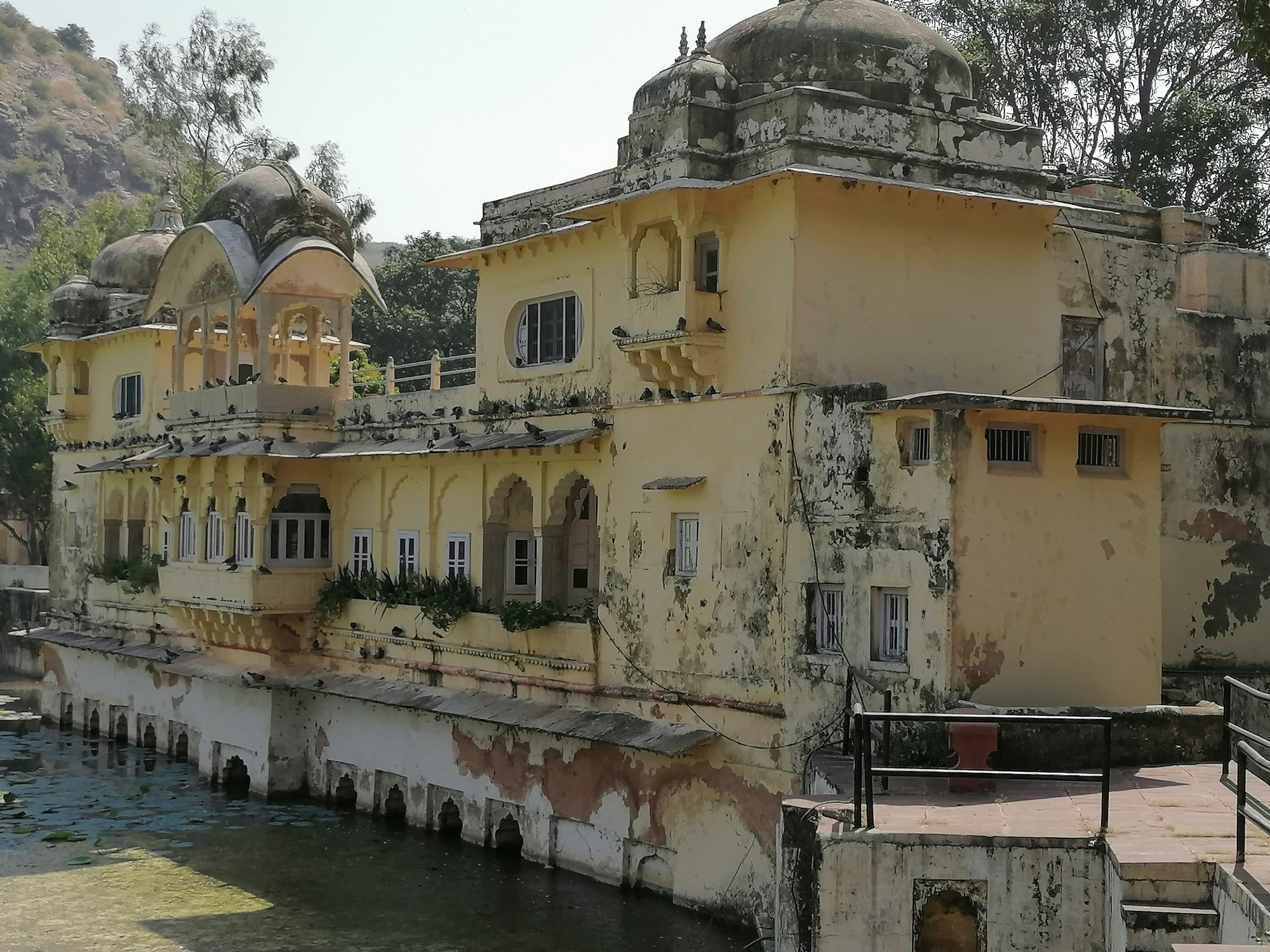
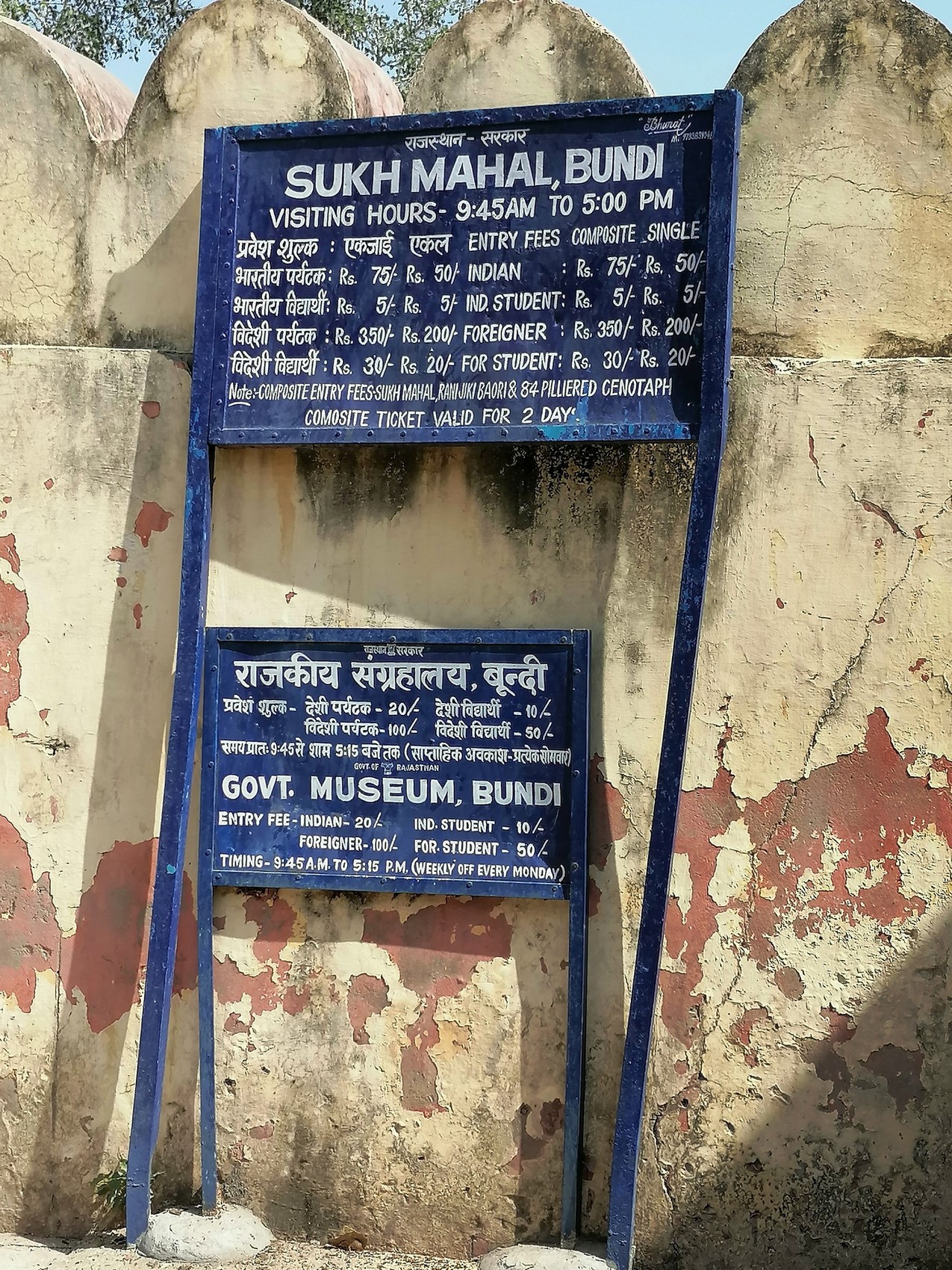
The original stone work is limestone and later additions such as the balcony were added in sandstone. The sculptures exhibited here were dredged from the River Chambal at Keshoraipatan.
A few simple photos in an upstairs room mark his stay at the palace in about 1885 for two nights. He fell in love with Bundi and has been associated with it ever since but did not write ‘Kim’ there as is often stated.
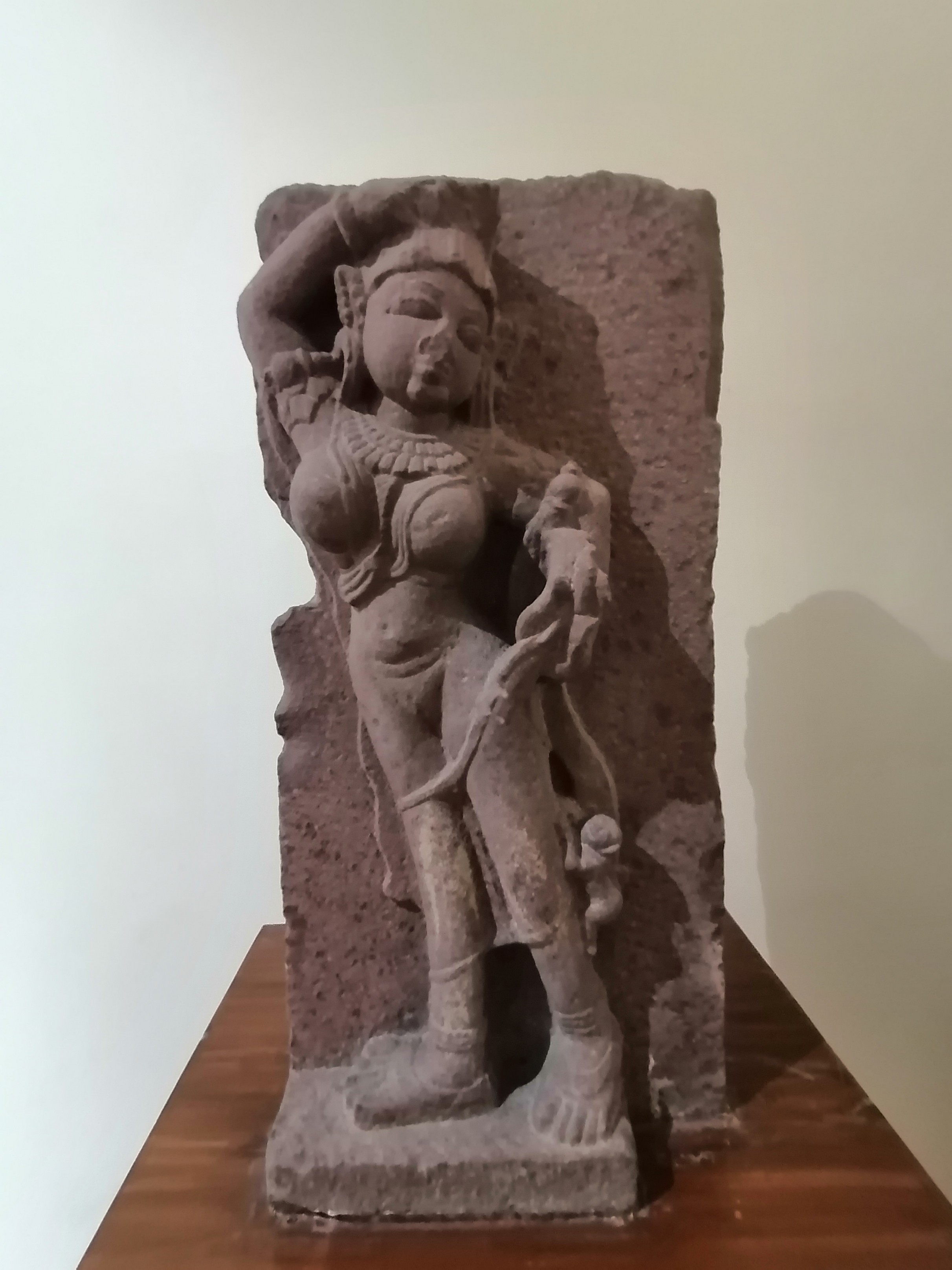
10th century A.D. from Vilas, Baran district. A mother is holding drapery in her left hand while her baby tries to crawl up her leg.
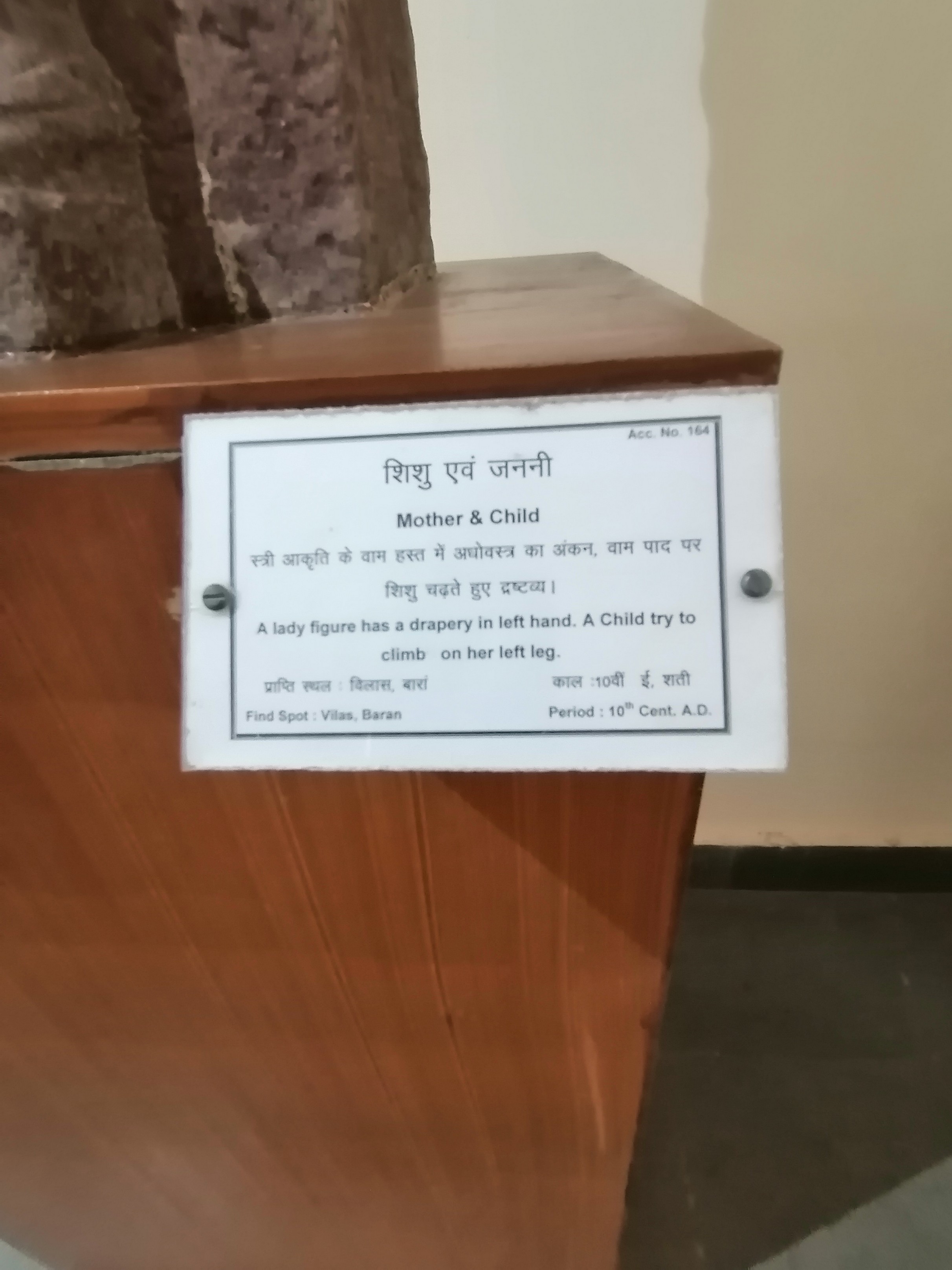
10th century A.D. from Vilas, Baran district. A mother is holding drapery in her left hand while her baby tries to crawl up her leg.
Kakuni Baran. 9th Century.
The symbolism of snakes in Hindu mythology is varied and complex. They represent rebirth, death and mortality as they shed their skins and are ‘reborn’.
Nagas (serpents) are semi-divine and live in the subterranean world known as pātāl. They protect the treasures hidden in the earth and have the ability to assume human form. They can be worshipped in their own right and if not respected can cause death and misfortune such as childlessness. They, therefore, need to be worshipped and appeased.
Kakuni Baran. 9th Century.
The symbolism of snakes in Hindu mythology is varied and complex. They represent rebirth, death and mortality as they shed their skins and are ‘reborn’.
Nagas (serpents) are semi-divine and live in the subterranean world known as pātāl. They protect the treasures hidden in the earth and have the ability to assume human form. They can be worshipped in their own right and if not respected can cause death and misfortune such as childlessness. They, therefore, need to be worshipped and appeased.
The 17th century and first half of 18th century saw the full flowering of Bundi paintings. A set of 36 in the same series of Radha and Krishna are exhibited in the museum.
O.P.Sharma developed a passion for picking up stones as a young boy walking in the hills around Bundi. He says that stones that have been worked on by humans have a special quality and ‘call out to him’ so he picks them up. Over the years he has found hundreds of hand axes and microlites and flakes which have been authenticated by archaeologists in Delhi and from other countries who come to visit him. He grew up working in a namkin shop and left school when young and had no knowledge of pre-history but he has found 104 rock painting sites and various hand-axe ‘factories’ and is now recognised as an expert guide and local historian. The Bundi museum is largely due to his efforts and his collection forms this pre-history display case.
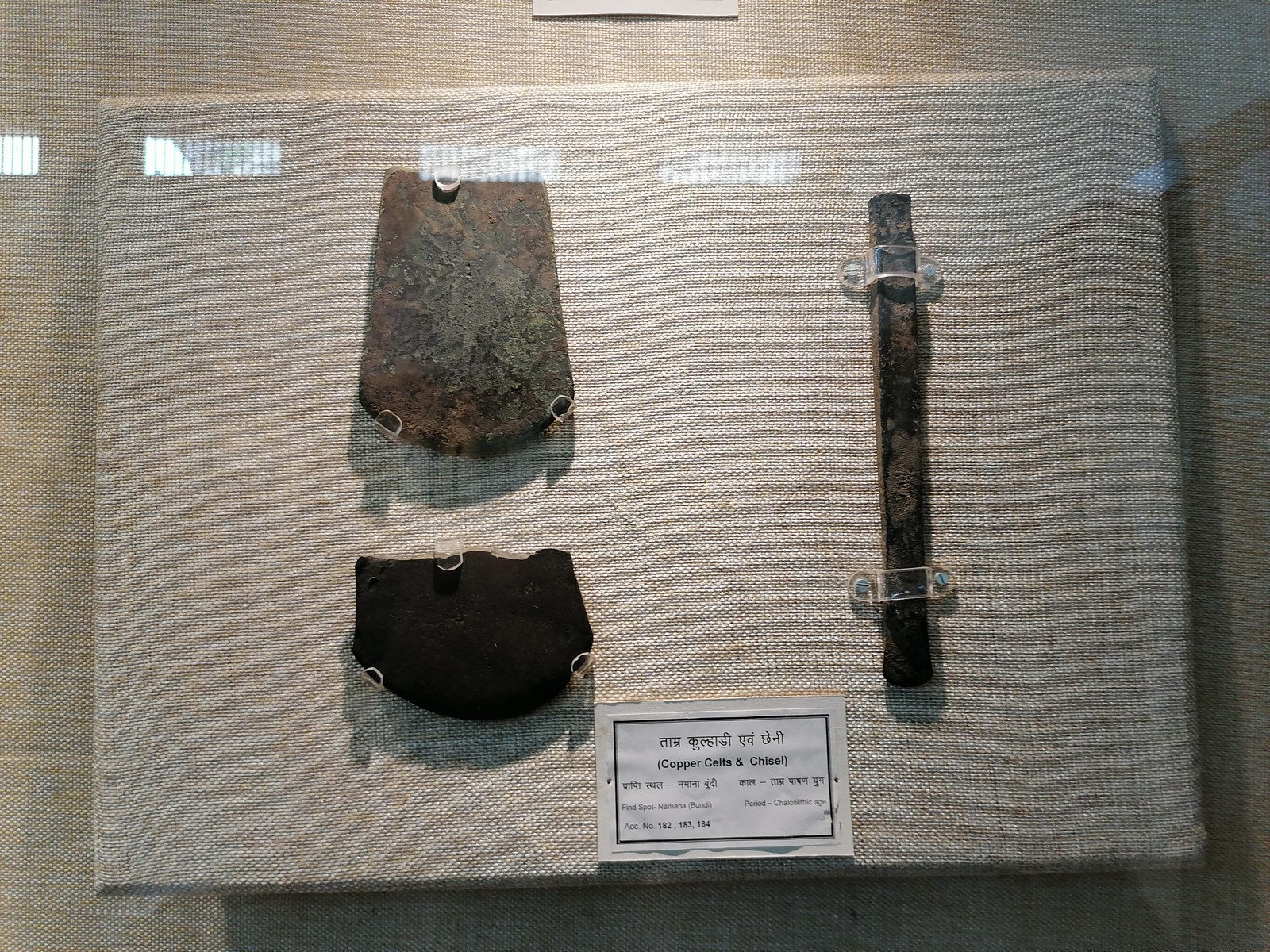
O.P.Sharma ‘Kukki’ discovered an ancient bronze age site near the river at Namana, near Kota and picked up these tools from the surface.
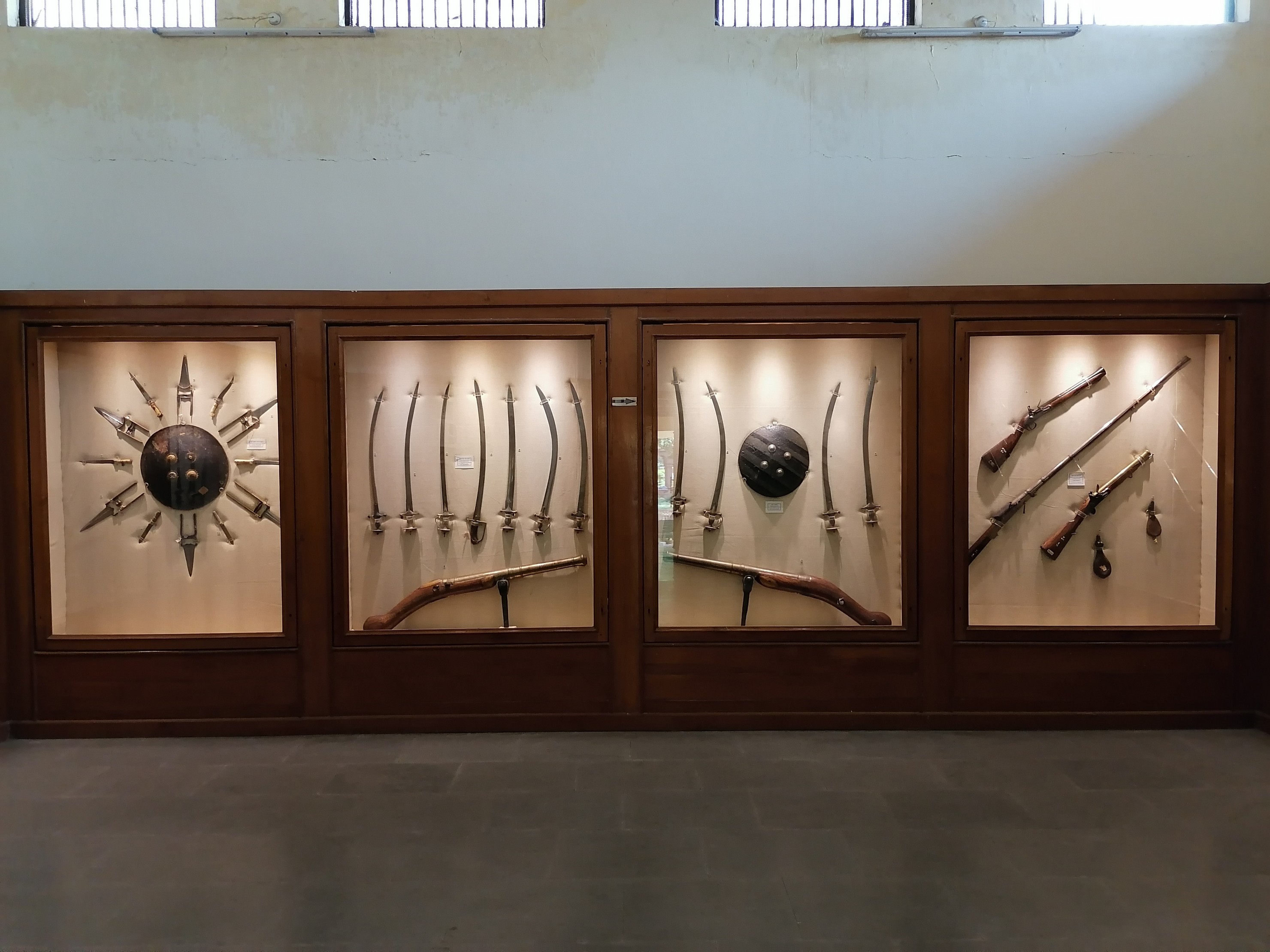
The central cases show two impressive jambura or camel guns. They were carried facing along the line of the camel but to be fired were swivelled. The camels knelt down and the gun was fired at 90 degrees by the gunner crouching behind the camel.
This type of dagger was the symbol of the Bundi state and embossed on the state coins.
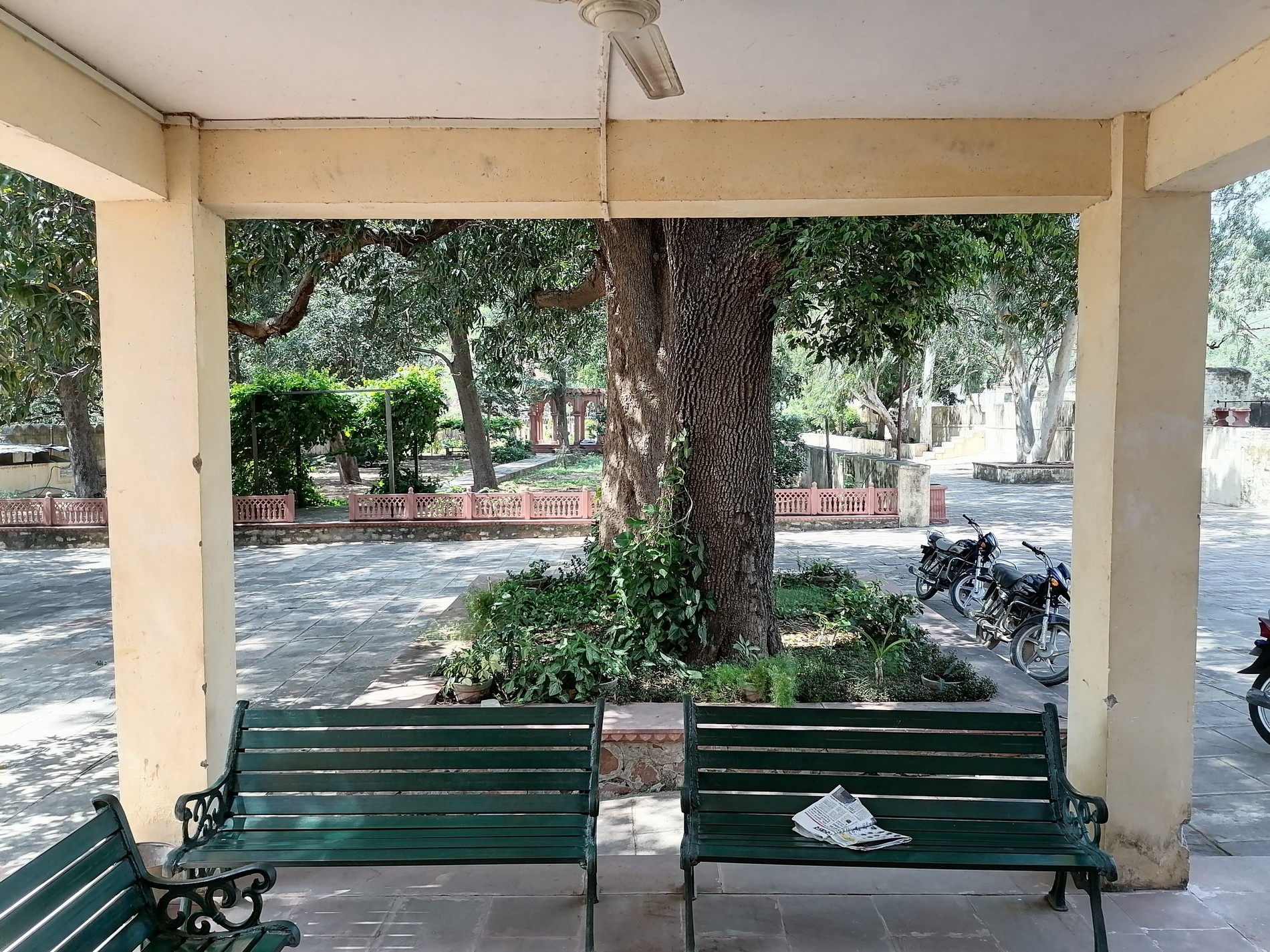
The palace has stunning wall paintings.
A panel at the 84-pillared cenotaph
The cenotaph can be visited with a composite ticket to also include access to Sukh Mahal and Raniji-ki-Baori.
Foreign National Adults: Rs100, Foreign National Children: Rs50
Car or taxi is convenient as it is just out of town.
Local auto-rickshaw is convenient if you are staying in Bundi.
Bundi has a railway station and is connected to Chittor, Kota and Agra.
Kota is the main line railway station and is 36 km away. (KOTA)
Good bus service.
A visit would make a pleasant stop for a day’s bicycle hire before exploring along the lake.
2. There is a collection of sculptures outside the Sukh Mahal which have all been dredged out of the River Chambal at Keshoraipatan which is an ancient sacred city in Bundi district. Since a religious carving couldn’t be buried or thrown away when broken it was immersed in the river. Bajri mining of river beds using flat boats is traditional at Keshoraipatan and as they bring up a sculpture, it is added to the collection at Sukh Mahal.
3. It is recommended to buy a composite ticket and make the effort to find the 84 Pillared Cenotaph which is now hidden from the main road. Raja Rao Anirudh Singh built this beautiful monument in memory of his dhai bai, that is to say the son of his wet nurse with whom he was reared and who was treated as part of the Royal Family. There are carvings of the famous Bundi elephants on the friezes around the monument as well as other animals and religious themes. It is set in a secluded and peaceful garden.
But the entrance fee to the Government Museum is separate and visitors will have to pay again when they reach the museum.
